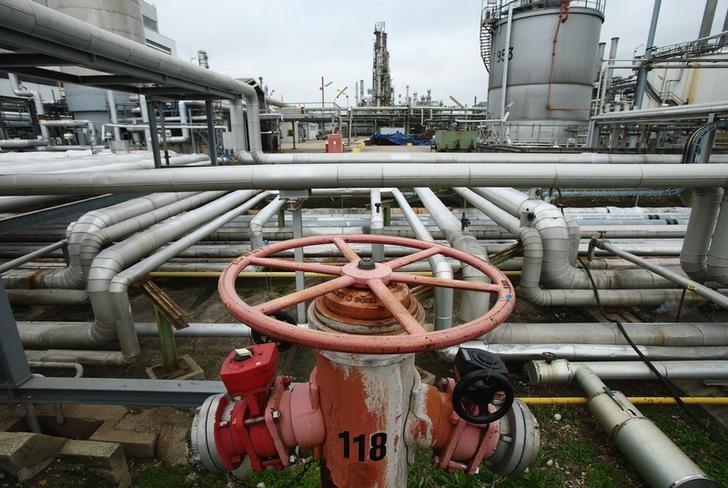Investing.com — Oil prices rose Wednesday after data showing a much bigger drop in U.S. crude supplies suggested demand would improve in the summer and ease concerns about weakness in China.
At 2:30 PM ET (1:25 PM GMT), the stock rose 1.6% to $85.08 per barrel, while it rose 2.6% to $82.85 per barrel.
US inventories shrink more than expected
saw a bigger-than-expected drawdown in the week to July 12, data from the Energy Information Administration showed on Wednesday.
Inventories fell by 4.9 million barrels, compared with expectations for a decline of 900,000 barrels.
The decline marked the third straight week of U.S. inventories falling as demand for travel increased during the summer season.
However, gasoline inventories unexpectedly rose by 3.3 million, while distillate inventories rose by 3.5 million, compared to expectations for declines of 1.7 million barrels and 500,000 barrels, respectively.
The unexpected addition of products comes as refinery activity fell to 93.7% of capacity, down from 95.4% in the previous week.
The risks to the oil supply remain a point of attention
Potential supply disruptions also took center stage in light of ongoing geopolitical tensions in the Middle East.
Israel continued to carry out attacks on Gaza, keeping tensions high with Hamas and Hezbollah. Yemeni groups were also seen carrying out repeated attacks on ships in the Red Sea, potentially disrupting crude oil shipments.
This allowed traders to place some risk premium on oil prices, although it remained unclear how much of an impact the disruptions in the Middle East had on crude.
Media reports this week showed Russia and members of the Organization of the Petroleum Exporting Countries reiterating their intentions to cut production and tighten global oil markets.
Chinese growth is slowing down
Crude oil markets fell sharply last week as weak economic data from top oil importer China increased concerns about slowing demand.
China saw its economy grow 4.7% in the second quarter, official data showed earlier this week, the slowest growth since the first quarter of 2023, capping crude oil price increases.
Data last week also showed crude oil imports to China fell sharply in June.
(Peter Nurse, Ambar Warrick contributed to this article.)


